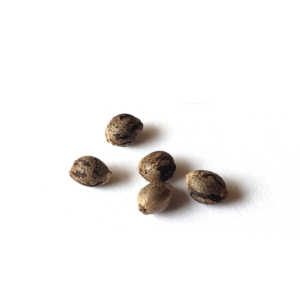Introduction: Cannabis Seeds and the Early History
The history of Marijuana Seeds spans thousands of years and crosses multiple continents. From its use in ancient medicinal practices to its spiritual significance in various cultures, the cannabis plant has played a prominent role in human civilization.
The use of cannabis seeds, in particular, has been documented in many ancient texts and archaeological findings. In this blog post, we’ll embark on a journey through time to explore the historical use of cannabis seeds and the plant itself in ancient civilizations such as China, India, and Egypt. We’ll delve into the medicinal, spiritual, and recreational applications of marijuana seeds and the cannabis plant, and highlight key historical figures and texts that mention their use.

Ancient Chinese Civilization: Marijuana Seeds and Medicinal Use
One of the earliest recorded uses of cannabis dates back to ancient China, where it was used for both medicinal and spiritual purposes. The legendary Chinese emperor Shen Nung, who lived around 2700 BCE, is often credited with discovering the medicinal properties of cannabis. Shen Nung was known as the “Divine Farmer” and is considered the father of Chinese medicine. In his pharmacopeia, known as the “Shen Nung Ben Cao Jing,” Shen Nung described cannabis as a remedy for various ailments, including gout, rheumatism, and malaria. He recommended the use of cannabis seeds, leaves, and roots for different medicinal preparations.
In addition to its medicinal applications, cannabis seeds were also used as a food source in ancient China. The seeds were consumed as a grain and were believed to have nutritional benefits. They were also pressed to extract oil, which was used for cooking and lighting. The fibers of the cannabis plant were used to make textiles, paper, and rope, further highlighting the versatility of this plant in ancient Chinese society.

History of Marijuana Seeds in Ancient India: Spiritual Significance
Moving westward, we find evidence of cannabis use in ancient India, where it held great spiritual significance. The Atharvaveda, one of the sacred texts of Hinduism dating back to around 1500 BCE, mentions cannabis as one of the five sacred plants. In the Indian tradition, cannabis was believed to be a gift from the gods and was used in religious ceremonies and rituals. The plant was known as “bhang” and was consumed in various forms, including a drink made from the leaves and flowers of the plant.
Cannabis was also used for medicinal purposes in ancient India. The Ayurvedic texts, which form the basis of traditional Indian medicine, mention the use of various parts of the plant, including marijuana seeds, to treat a range of conditions. Cannabis was used to alleviate pain, reduce inflammation, and promote sleep. It was also believed to have aphrodisiac properties and was used to enhance sexual experiences.
Ancient Egypt: Medicinal Use of Cannabis and Sacred Rituals
In ancient Egypt, cannabis was also used for medicinal and spiritual purposes. The Ebers Papyrus, an ancient Egyptian medical text dating back to around 1550 BCE, mentions the use of cannabis to treat inflammation and other ailments. The text includes a recipe for a cannabis-infused suppository, which was used to alleviate pain and inflammation in the anus.
Cannabis was also used in sacred rituals and burial practices in ancient Egypt. Cannabis pollen was found in the tomb of Ramses II, one of the most powerful pharaohs of ancient Egypt. The presence of cannabis in the tomb suggests that it played a role in the afterlife beliefs and rituals of the ancient Egyptians. It is believed that cannabis was used as an offering to the gods and was also consumed by priests during religious ceremonies.
Cannabis Seeds in Other Ancient Civilizations
The use of cannabis seeds and the plant itself was not limited to China, India, and Egypt. Evidence of cannabis use has been found in many other ancient civilizations across the globe. The Scythians, a nomadic people who lived in ancient Iran and Central Asia, were known to use cannabis for medicinal and recreational purposes. They would throw cannabis seeds onto hot stones and inhale the vapors, which would induce a state of euphoria and relaxation.
In ancient Greece and Rome, cannabis was also used for medicinal purposes. The Greek physician Pedanius Dioscorides, who lived in the first century CE, described the medicinal properties of cannabis in his work “De Materia Medica.” He recommended the use of cannabis to treat earaches, reduce inflammation, and relieve pain. The Roman naturalist Pliny the Elder also mentioned the medicinal use of cannabis in his work “Natural History.”
Changing Perceptions of Marijuana Seeds and Cannabis
Despite its long history of use, the perception of cannabis has undergone significant changes over time. In the 20th century, cannabis faced prohibition and criminalization in many parts of the world. The United States, in particular, led the charge against cannabis, with the passage of the Marijuana Tax Act of 1937, which effectively banned the plant.
However, in recent years, there has been a resurgence of interest in the medicinal benefits of cannabis. Scientific research has shown that cannabis contains compounds like cannabidiol (CBD) and tetrahydrocannabinol (THC), which have potential therapeutic applications. This has led to a growing movement towards the legalization of medical and recreational cannabis in several countries, including Canada, Uruguay, and some states in the United States.
The Future of Cannabis Seeds and Research
As the legal landscape surrounding cannabis continues to evolve, there is a growing interest in the potential applications of marijuana seeds and the plant itself. Researchers are exploring the use of cannabis for a wide range of medical conditions, including chronic pain, epilepsy, multiple sclerosis, and anxiety disorders. There is also interest in the use of cannabis for industrial purposes, such as the production of bioplastics, textiles, and biofuels.
However, despite the growing body of research on cannabis, there are still many challenges and barriers to overcome. The legal status of cannabis varies widely across the world, which can make it difficult for researchers to access the plant and conduct studies. There are also concerns about the potential risks and side effects of cannabis use, particularly in vulnerable populations like adolescents and pregnant women.
Conclusion: Learning from the Ancient Roots of Cannabis Seeds
Examining the ancient roots of cannabis provides valuable insights into its historical importance and the diverse ways in which it has been used by humans for thousands of years. From the use of cannabis seeds for food and medicine to the spiritual and recreational applications of the plant, cannabis has played a significant role in shaping human history.
As we continue to explore and understand the potential benefits and risks of this fascinating plant, it’s essential to remember and learn from its rich and ancient past. By studying the historical use of marijuana seeds and cannabis, we can gain a deeper appreciation for the complex relationship between humans and this plant, and inform our current debates and policies surrounding its use.
However, it’s important to note that the cultivation, possession, and use of marijuana seeds and cannabis may be subject to legal restrictions in various jurisdictions. It’s crucial for individuals to understand and adhere to the specific laws and regulations regarding cannabis in their area. As the legal landscape continues to evolve, it’s important to stay informed and educated about the latest developments in cannabis research and policy.










